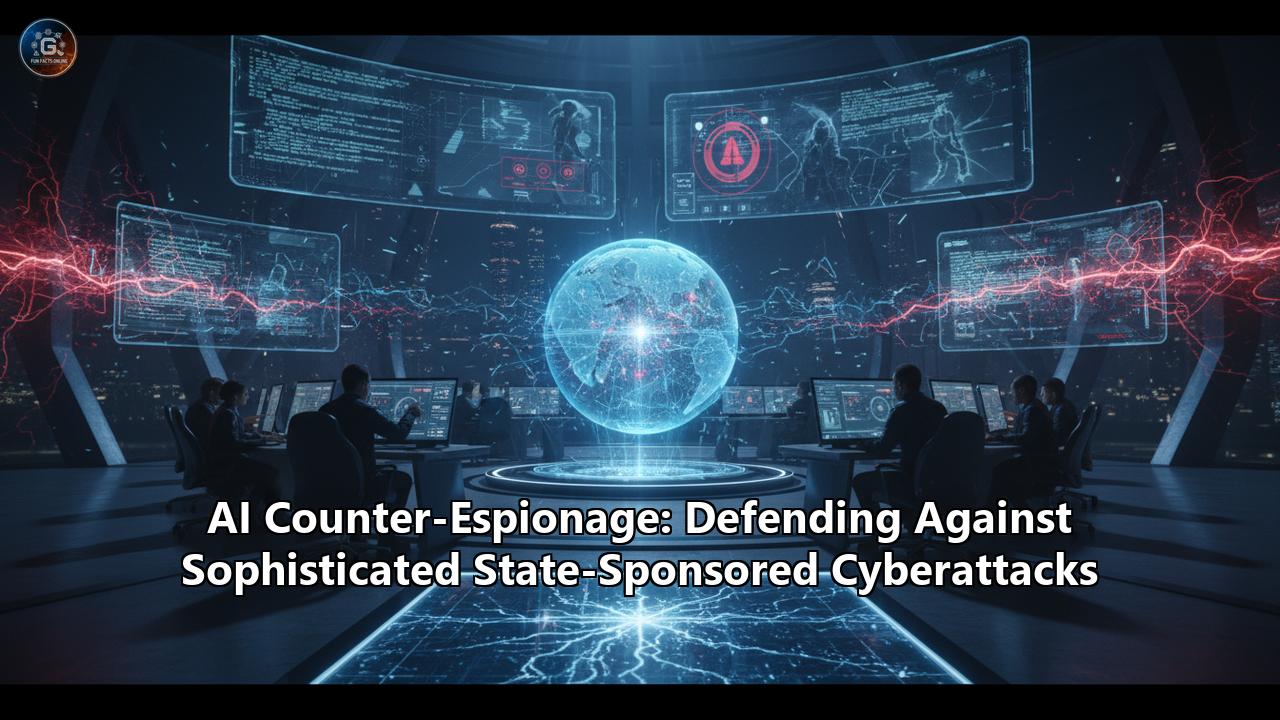autonomous reconnaissance will no longer be the exclusive domain of a few highly capable nation-states. Non-state actors, terrorist organizations, and even lone individuals could gain access to capabilities that were once the sole preserve of national intelligence agencies. This proliferation of AI-powered offensive tools poses a significant threat to global stability, as it increases the number of actors capable of causing widespread disruption.
A Shift from Reactive to Proactive and Predictive Defense
The only viable response to this future threat landscape is a fundamental shift in defensive philosophy—from a reactive posture of incident response to a proactive and predictive one. The future of AI counter-espionage lies in the ability to anticipate and neutralize threats before they materialize.
Predictive AI will become a cornerstone of this new approach. By analyzing vast datasets of global threat intelligence, malware trends, and geopolitical tensions, AI models will be able to forecast future attack vectors and identify emerging threats. This will allow organizations to proactively harden their defenses, prioritize patching of the most likely targets, and even pre-emptively hunt for threats within their own networks. This predictive capability is the defender's best hope of staying ahead in an environment where the speed of attack has outstripped the speed of human reaction.
The Enduring Challenge of Governance and the Human Element
As AI's role in both offense and defense becomes more pronounced, the challenge of governance will only intensify. The international community will continue to grapple with how to establish and enforce norms of behavior for AI in conflict. The development of binding international treaties and robust verification mechanisms will be crucial to prevent a "race to the bottom" where nations feel compelled to develop and deploy ever more dangerous autonomous systems.
The question of "meaningful human control" will remain at the forefront of the ethical debate. As we delegate more and more authority to autonomous agents, we must ensure that humans remain in the loop at critical decision points, particularly those involving the use of force. The doctrine of command accountability, which holds that a human commander is ultimately responsible for the actions of their subordinates (including AI), will be tested and refined in this new context.
Ultimately, the future of AI in cyber warfare is not one of machines replacing humans, but of humans and machines working in a deeply integrated partnership. AI will handle the data-heavy, machine-speed tasks of detection and response, while human experts will provide the strategic oversight, ethical judgment, and creative problem-solving that AI cannot replicate.
The road ahead is fraught with peril. The potential for AI to be misused for malicious purposes—from autonomous weapons to mass surveillance and disinformation—is very real. It could lead to a world of heightened geopolitical instability, where conflicts can escalate with terrifying speed.
However, the same technology also offers our best hope for defending against these very threats. An AI-powered defense, capable of operating at machine speed and scale, is the only realistic way to counter an AI-powered offense. The future of global security in the digital age will depend on our ability to win this race—to develop and deploy defensive AI that is more agile, more intelligent, and more adaptive than the offensive AI of our adversaries. It is a contest we cannot afford to lose. The digital ramparts are being built, the AI sentinels are taking their posts, and the silent, high-stakes battle for our digital future has already begun.
Reference:
- https://www.researchgate.net/publication/393097462_Ethical_considerations_and_accountability_frameworks_in_deploying_fully_autonomous_AI_for_real-time_cybersecurity_response_in_the_USA
- https://www.certlibrary.com/blog/establishing-ethical-principles-for-artificial-intelligence-in-defence-and-national-security/
- https://digital-commons.usnwc.edu/ils/vol97/iss1/22/
- https://www.womentech.net/en-br/how-to/dual-use-nature-ai-in-cybersecurity
- https://www.intelligence.gov/ai/ai-ethics-framework
- https://thediplomat.com/2024/07/can-china-and-the-us-find-common-ground-on-military-use-of-ai/
- https://dig.watch/updates/un-general-assembly-highlights-threats-of-unregulated-technology
- https://www.nato.int/nato_static_fl2014/assets/pdf/pdf_2016_07/20160627_1607-factsheet-cyber-defence-en.pdf
- https://ciss.tsinghua.edu.cn/info/CISSReports/7041
- https://www.webasha.com/blog/the-ethics-of-using-ai-for-hacking-and-security-balancing-protection-and-risk
- https://www.google.com/search?q=time+in+CN
- https://www.brookings.edu/articles/laying-the-groundwork-for-us-china-ai-dialogue/
- https://www.war.gov/News/Releases/Release/Article/2091996/dod-adopts-ethical-principles-for-artificial-intelligence/
- https://www.researchgate.net/publication/355201857_Ethical_Principles_for_Artificial_Intelligence_in_National_Defence
- https://www.eye.security/blog/dual-use-ai-in-cyberattacks-how-llms-are-reshaping-the-threat-landscape
- https://cetas.turing.ac.uk/publications/eu-ai-act-national-security-implications
- https://www.voanews.com/a/us-and-china-to-have-ai-talks-in-switzerland/7609167.html
- https://www.paloaltonetworks.com/cyberpedia/ai-risks-and-benefits-in-cybersecurity
- https://www.securityweek.com/un-adopts-resolution-backing-efforts-to-ensure-artificial-intelligence-is-safe/
- https://ccdcoe.org/uploads/2018/11/Towards_NATO_AICA.pdf
- https://en.wikipedia.org/wiki/Existential_risk_from_artificial_intelligence
- https://intrix.com.au/articles/ai-and-data-privacy-risks-unveiling-the-threat-of-ai-driven-cyber-attacks/
- https://safe.ai/ai-risk
- https://www.youtube.com/watch?v=60kFLtcaoZU
- https://www.brookings.edu/articles/steps-toward-ai-governance-in-the-military-domain/
- https://www.qa.com/resources/blog/ethical-use-of-ai-agents-in-defence-and-national-security/
- https://www.bsigroup.com/en-IE/insights-and-media/insights/blogs/the-eu-ai-act-and-its-interactions-with-cybersecurity-legislation/
- https://www.malwarebytes.com/cybersecurity/basics/risks-of-ai-in-cyber-security
- https://iuslaboris.com/insights/cyber-security-obligations-under-the-eu-ai-act/
- https://dig.watch/updates/military-ai-and-the-void-of-accountability
- https://www.zdnet.com/article/un-security-council-delegates-urge-ai-controls-to-defuse-potential-global-threat/
- https://www.weforum.org/stories/2024/04/artificial-intelligence-technology-news-april-2024/
- https://truyo.com/the-international-ai-treaty-a-global-step-toward-cybersecurity-and-human-rights-protection/
- https://www.coe.int/en/web/artificial-intelligence/the-framework-convention-on-artificial-intelligence
- https://www.rstreet.org/commentary/five-promising-cybersecurity-measures-from-the-first-ever-international-ai-treaty/
- https://jipel.law.nyu.edu/the-worlds-first-ever-international-ai-treaty/
- https://www.cybersecurityintelligence.com/blog/international-agreement-to-regulate-artificial-intelligence-7939.html
- https://www.secureworld.io/industry-news/potential-nato-cybersecurity-proposal
- https://hcss.nl/report/nato-allies-offensive-cyber-policy-a-growing-divide/
- https://www.cigionline.org/articles/ai-and-the-actual-ihl-accountability-gap/
- https://www.lsac.org/blog/how-ai-threatens-privacy
- https://singleclic.com/does-artificial-intelligence-threaten-privacy/
- https://www.europarl.europa.eu/topics/en/article/20230601STO93804/eu-ai-act-first-regulation-on-artificial-intelligence
- https://dig.watch/updates/eu-ai-act-oversight-and-fines-begin-this-august
- https://www.trustwave.com/en-us/resources/blogs/trustwave-blog/understanding-the-impact-of-ai-on-data-privacy/
- https://www.youtube.com/watch?v=myzVljzVLb8

